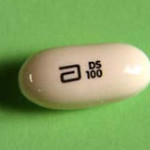An ongoing dialogue on HIV/AIDS, infectious diseases,
March 17th, 2010
This One Drives Me Crazy
 In the debate over efforts to expand HIV testing by making it less “exceptional” and more like other important tests done in medical care — something I heartily endorse (no kidding) — comes one particular protest that makes absolutely no sense to me.
In the debate over efforts to expand HIV testing by making it less “exceptional” and more like other important tests done in medical care — something I heartily endorse (no kidding) — comes one particular protest that makes absolutely no sense to me.
It goes something like this:
We cannot expand HIV testing before guaranteeing that all newly-diagnosed people can get access to care.
ARRGGGH!
In what other disease do we make this stipulation? Would we stop recommending cancer or diabetes or hypertension screening in poor communities because there is no guarantee that they will be “covered” if we find something?
Look, the desire to get everyone access to care is laudable. And we should plan for an increase in cases when testing expands, as has so impressively happened in Washington DC. But we’re hardly going to fix the whole health care system at the same time we change antiquated HIV testing laws.
It’s especially ironic that this keeps coming up in HIV. Is there another disease with so many safety nets in place for coverage as HIV/AIDS?
Some would argue — I would — that we have in HIV care a pretty impressive model for national health care.
So let’s get that law changed already, ok?
March 14th, 2010
MRSA Bacteremia Question Redux — and the “Answer”
 As noted here, I recently had to answer a question on management of MRSA bacteremia as part of an every-10-year cycle of test-taking.
As noted here, I recently had to answer a question on management of MRSA bacteremia as part of an every-10-year cycle of test-taking.
(For more on that joyous process, read this interesting debate here in the New England Journal of Medicine.)
The question seemed to have no obvious right answer, so I did what one is explicitly allowed to do in this phase of the process — in other words, I asked some experts for their advice.
As a reminder, the case is a guy with positive blood cultures for MRSA (vancomycin MIC 2.0) on hospital day 4 despite receiving vancomycin (trough 15) and having undergone resection of a mycotic aneursym on hospital day 3.
Choices were: 1) continue current vancomcyin dose; 2) increase vancomycin to achieve trough of 20; 3) change to daptomycin; 4) change to linezolid.
Expert Number One said the following:
What a terrible question. A classic case of “what is the writer thinking and how much does he/she know?” 4 is clearly wrong, but I wouldn’t be surprised to hear that this is what they want. If the MIC is really 2, you need a trough of 40, which is not an option, so 2 is wrong. Given that he is only 5 days out and average duration of bacteremia in this setting is 7 days or so, you could consider 1 with reassessment in 2 or 3 days (but this is not really given here) and with MIC of 2, probably won’t work. That leaves 3 by default, but with MIC of 2, there is a significant possibility of heteroresistance to bothvanco and dapto. A terrible question. I wouldn’t know how to guess what they want!
And Expert Number Two — who kindly allowed me to cite as Dr. Myoung-don Oh, who is the corresponding author of this paper — generously offered:
I think there are several issues to resolve.
#1. Is the patient failing on VCM therapy? I think it is too early to declare VCM failure in this case. (1)The median duration of MRSA bacteremia(or mycotic aneurysm) is >4 days (2) Even if we choose an optimum antibiotic, MRSA bacteremia would persist if infected focus is not removed). In this case, the aneurysm was resected on HD#3. Therefore, I would rather wait 2 more days to see if MRSA bacteremia persist.
March 10th, 2010
The Extraordinary Power of Placebo

Just published in the journal Neurology — not typically on my radar screen — is this remarkable study comparing pregabalin to placebo for HIV-related distal sensory peripheral neuropathy.
Here are the results:
At endpoint, pregabalin and placebo showed substantial reductions in mean Numeric Pain Rating Scale (NPRS) score from baseline: -2.88 vs -2.63, p = 0.3941.
(-snip-)
Individuals with HIV-associated neuropathy achieved NPRS treatment effect size similar to those in studies of diabetic peripheral and postherpetic neuralgia. However, the placebo group in the current study had a much higher NPRS change than in the diabetic peripheral neuropathy or postherpetic neuralgia studies
In other words, the pregabalin here worked great, but the placebo effect was so gargantuan that the placebo was just as good.
Writing in Journal Watch: AIDS Clinical Care, the always-astute Abbie Zuger has a theory why this happened:
Notably, this study is not the first in which a treatment for HIV-related peripheral neuropathy has elicited an unusually high placebo response. The reasons behind that phenomenon would be extremely interesting to pursue — might HIV-positive individuals have greater faith in the power of medication than do others?
I think she’s on to something important here. After all, in how many other diseases can patients so directly link the medications they are taking to their own survival?
And we clinicians who practice HIV medicine should keep this in mind when prescribing medications to our patients. Strong mutual conviction that something will work — from both provider and patient — may well be a self-fulfilling prophecy.
Why not leverage this for all it’s worth?
March 5th, 2010
Test Question on MRSA Bacteremia
 I just happened to be taking a test the other day — something I do for fun every now and then, say every 10 years or so — and I came across this question (slightly condensed/changed to protect the innocent):
I just happened to be taking a test the other day — something I do for fun every now and then, say every 10 years or so — and I came across this question (slightly condensed/changed to protect the innocent):
Man with history of IDU admitted with fever, has bacteremia due to MRSA (MIC 2 mcg/mL confirmed by E-test). Found to have mycotic aneurysm of superficial femoral artery. Aneurysm is resected surgically on hospital day 3. On vancomycin 1 gm IV q12 hours, vancomycin trough is 15 μg/mL. Blood cultures drawn on hospital day 4 turn positive the next day; patient is subjectively improved but still febrile. WBC has declined from 16k to 11K.
What is the best next step?
1. Continue current rx
2. Increase vancomycin dose to achieve trough of 20 mcg/mL
3. Change vancomycin to daptomycin
4. Change vancomycin to linezolid
So what’s the answer?
Does anyone really know what the best thing to do here is? For the record, I got it “wrong.”
February 28th, 2010
CROI 2010 Recap: No Obvious Blockbusters, But …
 Ok, I’ll admit it — I didn’t see any studies presented at CROI this year that will immediately transform HIV care on a day-to-day basis. Nothing that will alter practice right now.
Ok, I’ll admit it — I didn’t see any studies presented at CROI this year that will immediately transform HIV care on a day-to-day basis. Nothing that will alter practice right now.
Nothing like last year’s NA-ACCORD, or 2008’s surprising DAD study, or 2007’s raltegravir studies, to name a few recent examples.
(All subsequently published, of course — links are to the papers.)
Still, as usual, lots to think about:
- Does expanded HIV treatment reduce new infections? Maybe …
- Could the rest of the country expand HIV testing and linkage to care the way they have done in Washington, D.C.? Wow, those are impressive data.
- Can a 4-drug-in-one pill treatment compete with what we have, or will have? You decide.
- Is boosted atazanavir as good as efavirenz? Seems so.
- What are the long-term consequences of these changes in renal function or bone health? The extent to which our treatments accelerate aging remains a major open question.
- Is there any doubt that letting the CD4 cell count fall increases the risk of non-AIDS complications? I don’t think so. (Multiple other papers with similar findings.)
- Is tenofovir the only drug associated with renal dysfunction? Not according to this study.
- Could there be a (broader) role for a CCR5 antagonist? Especially one that is once-daily and does not require boosting? This drug looks promising, but frankly I don’t see it unless a better tropism test can be worked out — or even better, if there’s some non-antiviral utility to these drugs, or (hope of hopes) they can be part of a “cure”.
- Is “intensification” dead? Maybe not, but it’s clearly on life support. See studies with raltegravir, maraviroc, and enfuvirtide for the evidence.
But just when we think we have it all figured out, there are these two excellent overviews of how we neither have a cure for HIV (Maldarelli) nor can we treat all our patients successfully (Eron).
These are great summaries of two remaining challenges in the field, and well-worth the web casts — which are viewable here.
February 19th, 2010
CROI 2011 Dates: February 27-March 3, Boston
 CROI just about wrapping up — excellent, as usual. Hope to provide some “greatest hits” shortly.
CROI just about wrapping up — excellent, as usual. Hope to provide some “greatest hits” shortly.
But since John Mellors announced the dates of next year’s conference — and because the CROI web site can be “leisurely” in posting this information — I offer the following evidence as a public service to researchers, teachers, clinicians, and schedule-makers out there in HIV/ID Land.
Come for the conference, stay for the weather!
February 14th, 2010
Retrovirus Conference (CROI) 2010 Preview
 Just as pitchers and catchers report to Spring Training this week, many HIV specialists are gearing up for the 17th Conference on Retroviruses and Opportunistic Infections (CROI), which starts this Tuesday in San Francisco.
Just as pitchers and catchers report to Spring Training this week, many HIV specialists are gearing up for the 17th Conference on Retroviruses and Opportunistic Infections (CROI), which starts this Tuesday in San Francisco.
(I don’t suppose many people see the link between those two events. Oh well.)
And since the “pocket program” to the Conference has been available since last week, below is a highly-subjective (admittedly developed-world centric) list of potentially important presentations, in a somewhat random order. Apologies ahead of time for leaving off something of great importance, most likely buried somewhere deep in the poster presentations.
- 28 Immunodeficiency, HIV RNA Levels, and Risk of Non-AIDS-defining Cancers
- 30 HIV Infection Is an Independent Risk Factor for Lung Cancer
- 33 Decreases in Community Viral Load Are Associated with a Reduction in New HIV Diagnoses in San Francisco
- 34 Monitoring the Impact of Expanded HIV Testing in the District of Columbia Using Population-based HIV/AIDS Surveillance Data
- 53 Safety and Efficacy of TBR 652, a CCR5 Antagonist, in HIV-1-infected, ART-experienced, CCR5 Antagonist–Naïve Patients
- 54LB Phase 3 Trials of Vicriviroc in Treatment-experienced Subjects Demonstrate Safety but Not Significantly Superior Efficacy over Potent Background Regimens Alone
- 57 Efficacy and Safety at 48 Weeks of Once-daily vs Twice-daily DRV/r in Treatment-experienced HIV-1+ Patients with No DRV Resistance-associated Mutations: The ODIN Trial
- 58LB Single-tablet, Fixed-dose Regimen of Elvitegravir/Emtricitabine/Tenofovir Disoproxil Fumarate/GS-9350 Achieves a High Rate of Virologic Suppression and GS-9350 Is an Effective Booster
February 11th, 2010
Ritonavir Tablet Approved
 It’s not on Abbott’s web site yet (update: now it’s here), but the FDA has approved a new formulation of ritonavir — a heat-stable 100 mg tablet. From an e-mail release by the FDA:
It’s not on Abbott’s web site yet (update: now it’s here), but the FDA has approved a new formulation of ritonavir — a heat-stable 100 mg tablet. From an e-mail release by the FDA:
On February 10, 2010, FDA approved Norvir (ritonavir) 100 mg Tablets. These tablets do not require refrigeration. Unlike the capsule formulation [pictured], Norvir tablets must be taken with meals.
–snip–
NORVIR tablets are not bioequivalent to NORVIR capsules. Under moderate fat conditions (857 kcal; 31% fat, 13% protein, 56% carbohydrates), when a single 100 mg NORVIR dose was administered as a tablet compared with a capsule, AUC(0- ∞) met equivalence criteria but mean Cmax was increased by 26% (92.8% confidence intervals: ↑15 -↑39%).
This is obviously an advance — the Norvir soft-gel capsule is much-despised for a variety of reasons, one of the most notable being the glob of melted capsules that results if the medication is left in the car, in a warm room in the summertime, near a radiator, etc. When Kaletra switched from capsule to tablet, the heat-stability was a big improvement in convenience, and also made treatment in resource-limited settings much easier.
Time will tell if the increase in peak levels has any effect on tolerability, a potential concern since much of ritonavir’s toxicity is dose-related. I suspect Abbott will have both formulations available for a while until this is sorted out.
And for those who still have patients still on 600 mg twice-daily — it’s time to switch to something else!
February 8th, 2010
Is She or Isn’t She …
… taking antiretrovirals?
Over on our Journal Watch/AIDS Clinical Care web site, we’ve posted case of a pregnant woman who says she’s taking ART as prescribed, but the lab tests say otherwise.
How do you manage these cases?

